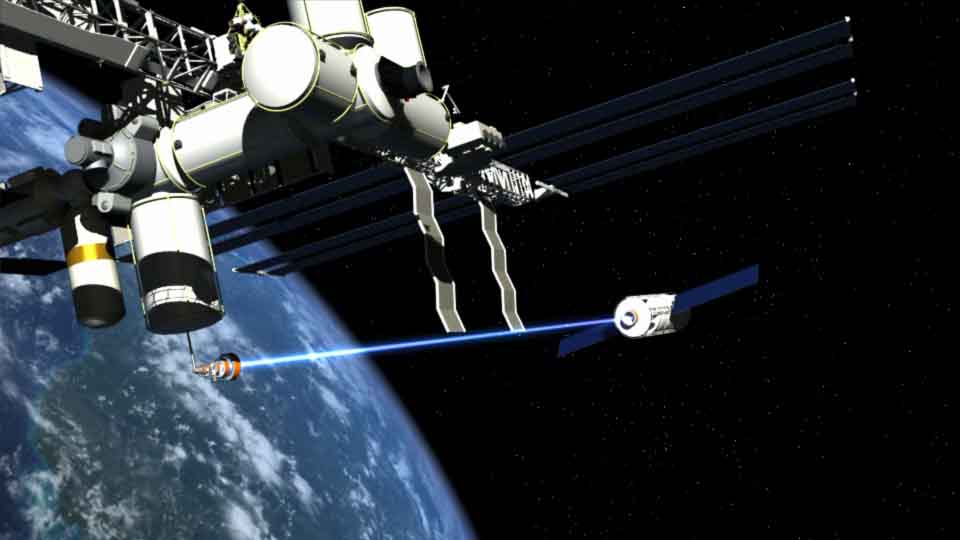Magnetized Beamed Plasma Propulsion (MagBeam)
People:
Robert Winglee | B.R. Roberson
| |
 |
The major push in advanced electric propulsion at this time is
for the deployment of large plasma thrusters, with ever increasing power units and cost.
Imagine instead a system where large power units are placed permanently in orbit around critical
regions of a planet. With a beamed plasma system, spacecraft can be pushed or pulled to
perform orbital transfers around the planet
or accelerated to other planets at essentially the cost of a sub-orbital mission.
NIAC 2005 Fellows Meeting presentation and
additional movies of magbeam animations and prototyping can be seen by clicking on the above links.
Phase I NIAC Final Report (2 Mbytes).
|
|
|
In order for MagBeam to be successful, a highly collimated plasma beam is required.
Recent developments at the University of Washington have provided such a source in the form
of the high power helicon (HPH). The device is setting new records each week
in terms of maximum plasma density and energy developed by an electrodeless plasma system.
The fact that the system is electrodeless means that very high power (in excess of MW can be
achieved with little erosion of the system. By clicking on the image you can see a
video of the development
of a highly focussed plasma beam.
|
|
|
The other half of the MagBeam system is the deflector system on the payload to be moved.
This can be achieved by M2P2 or Plasma Magnet systems
where plasma effects can be used to make an initially large magnetic deflector. Self-focussing
properties of the beam plasma/magnetic field interaction will allow self-focussing of the system through
magnetic reconnection, allowing the beaming to occur over very large distances with little loss of beam power.
By clicking on the image a video showing deflection and self-focussing can be seen during M2P2/HPH testing. |

